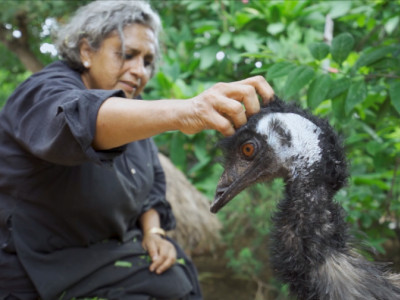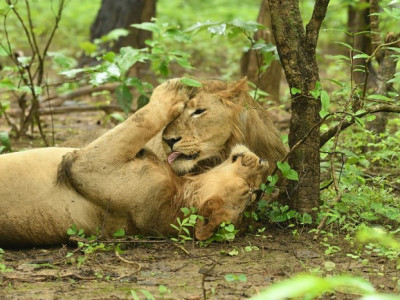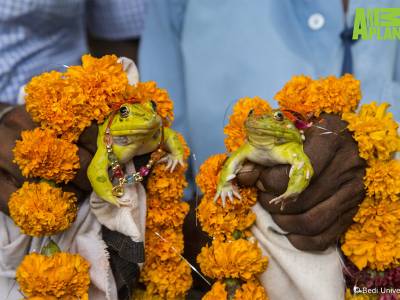Animal Planet Presents 'Monkeys Revealed'
We are just one of around 400 species of primate in the world. We have hundreds of bizarre and colourful relatives who live fascinating lives in exotic locations – yet most of us know almost nothing about them.
From India to Madagascar, Borneo to Peru, Animal Planet’s new series MONKEYS REVEALED travels the world meeting apes, monkeys and lemurs of all shapes and sizes, showcasing these animals’ amazing behaviours and revealing just what makes our animal family so special.
MONKEYS REVEALED will air Monday to Friday at 8 pm on Animal Planet, starting November 23rd.
A highly developed brain is the first of three key similarities shared by all primates. Secondly, we share a similar face, with eyes that face forwards. This gives us 3D vision, the ability to judge distances perfectly. And thirdly, the most defining characteristic of any primate are its remarkable hands with an opposable thumb each. This blueprint, intelligence, forward facing eyes and a grasping hand is the key to the success of our entire animal family.
Getting up close and interacting with these engaging creatures, MONKEYS REVEALED demonstrates that we humans are not quite as unique as we like to think! From the orangutan who washes every morning to the bonobo babies who just want to have fun and the rhesus macaques who have mastered the art of city life, these primates show us how similar we are to our animal cousins.
A visually stunning and definitive, the series is also open, accessible and surprising, featuring a contemporary soundtrack and light-hearted style.
Meet some of them:
RHESUS MACAQUES are Asian, Old World monkeys. Their natural range includes Afghanistan, Pakistan, India, Southeast Asia, and China. Found most commonly in India, these intelligent animals can adapt to many habitats, and some can even become accustomed to living in human communities.
The PYGMY MARMOSET is a small New World monkey native to rainforests of the western Amazon Basin in South America. It is notable for being the smallest monkey and one of the smallest primates in the world at just over 100 grams. They are known as the Pocket Monkey, Little Lion, and the Dwarf Monkey.
The JAPANESE MACAQUE is a terrestrial Old World monkey species native to Japan. They are also sometimes known as the snow monkey because they live in areas where snow covers the ground for months each year – no other non-human primate is more northern-living, nor lives in a colder climate. Individuals have brown-grey fur, red faces, and short tails.
SIFAKAS are a genus of lemur from the family Indriidae within the order Primates. Their name of the family is an onomatopoeia of their characteristic "shi-fak" alarm call. Like all lemurs, they are found only on the island of Madagascar.
The EMPEROR TAMARIN is a small species of monkey found in the forests of South America. The Emperor tamarin was named because of it's elegant white moustache, which is thought to resemble that of German emperor Wilhelm II.
The SILVERY LUTUNG, also known as the silvered leaf monkey or the silvery langur, is an Old World monkey. It is arboreal, living in coastal, mangrove, and riverine forests in Peninsular Malaysia, Sumatra, and Borneo. It is a medium-sized monkey with a long, non-prehensile tail.
The VERVET is a small, black-faced monkey, native to Africa. They have been noted for having human-like characteristics, such as hypertension, anxiety, and social behaviour.


















Share
Facebook
YouTube
Tweet
Twitter
LinkedIn